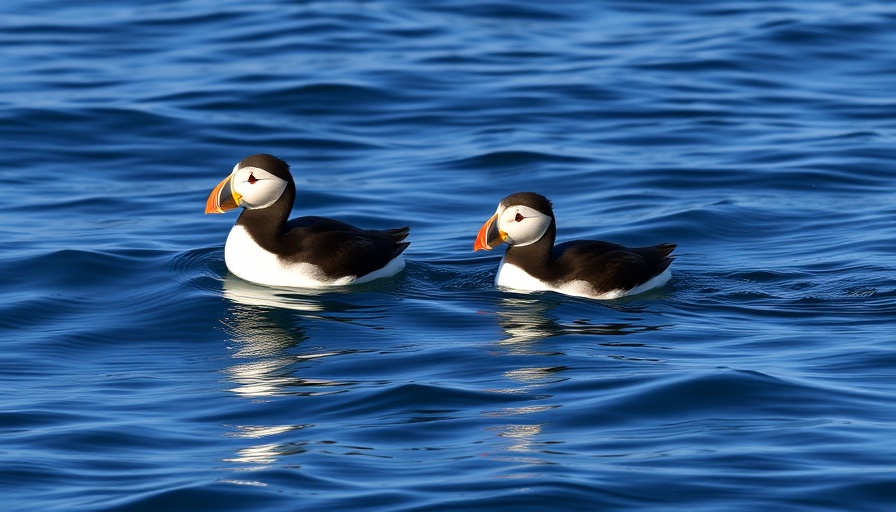
Exploring the Challenges Facing Tufted Puffins in Washington
The Tufted Puffin, a charming seabird known for its distinctive tufts and playful demeanor, is facing significant challenges along the Washington coast. As highlighted by Professor Peter Hodum from the University of Puget Sound, studying these local populations provides essential insights crucial for conserving the species as a whole. The puffins’ populations at the fringes of their range, such as those in Washington and Oregon, may be experiencing the early signs of decline that could soon affect core populations in places like Alaska.
The Conservation Efforts Making a Difference
Recent developments in conservation reveal a collaborative push to bolster Tufted Puffin populations in the Pacific Northwest. Under the direction of Katherine Luscher, a veteran of environmental nonprofit organizations, a cohesive strategy is being implemented through collaborations involving groups like the National Audubon Society and Friends of Haystack Rock. This effort not only revitalizes hope for the puffins in Washington but also emphasizes the urgent need for proactive measures to halt their gradual decline.
The Broader Impacts of Environmental Change on Puffins
The declining numbers of Tufted Puffins highlight broader environmental issues affecting marine ecosystems. Factors such as climate change, shifts in ocean currents, and pollution are disrupting the delicate balance of marine life, which directly impacts these seabirds' feeding and breeding patterns. Studies reveal that as puffins struggle to find their preferred prey, their ability to raise healthy chicks diminishes, making conservation efforts even more critical.
Local Engagement in Puffin Conservation
Residents and birdwatchers can play a vital role in puffin conservation. With dedicated viewing opportunities along the Washington coast, particularly at Cape Flattery, enthusiasts are encouraged to take part in efforts to monitor and support puffin populations. Guides and volunteers are often available to enhance the experience, educating visitors on the significance of these birds and ways to contribute to their preservation.
What Lies Ahead for the Tufted Puffin?
The future for the Tufted Puffin in Washington remains uncertain. With predictions suggesting that their populations may face further declines, it becomes crucial to not only recognize the immediate threats but also to engage the community in meaningful conservation efforts. As scientists and volunteers collaborate to create action plans, individuals are reminded that every small effort counts in the grand mission of saving this beloved seabird.
As we reflect on the plight of the Tufted Puffin, let’s consider our roles in creating sustainable solutions that secure a future for not just this species, but the ecosystem that nurtures them. By learning about their struggles and taking action collaboratively, we can ensure that these vibrant birds continue to grace our coastlines for generations to come.
 Add Row
Add Row  Add
Add 




Write A Comment